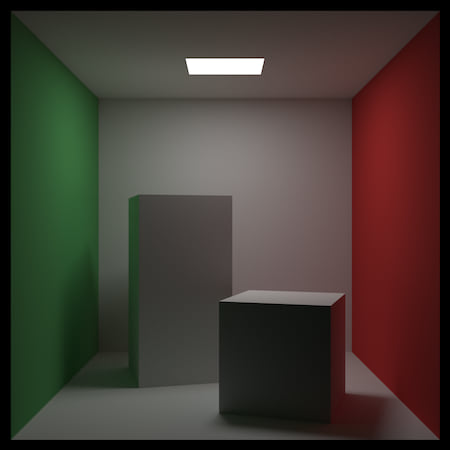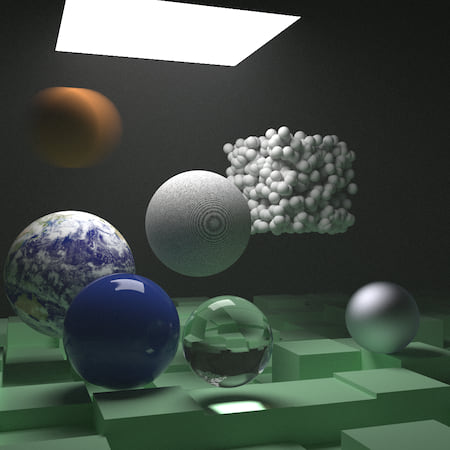1 unstable release
| 0.1.0 | Apr 13, 2020 |
|---|
#511 in Graphics APIs
184 stars & 4 watchers
19MB
5.5K
SLoC
Rayt


This is a Rust implementation of the ray-tracer from Peter Shirley's excellent books,
Ray Tracing in One Weekend, Ray Tracing: The Next Week, and Ray Tracing: The Rest of Your Life.
This is not by any means a fully featured ray-tracer. Rather, this is something I built in order to learn Rust and ray-tracing. I am sharing it in case it is useful to others trying to do the same.
Functionality
Rayt stores and reads scene data in its own format using yaml files. Those are nothing more than a yaml serialisation of the corresponding Rust objects.
There are two modes of operation described in more detail in the next section.
generatewhich will generate the yaml file for a scene based on presets in the coderenderwhich will render the scene in the given yaml
Various examples from the books are provided in the form of scenes. The generate mode can be used to
quickly regenerate the config files after making changes to them in the code, but for small scenes the files
can be easily directly edited as well.
How to run
This code was developed and tested using Rust 1.42, however it is not using any bleeding edge features of
the language so any reasonably recent stable version should be enough to compile it.
To install the binary in your local environment:
cargo install --path ${PATH_TO_THIS_REPO}
Help:
rayt --help
rayt generate --help
rayt render --help
Generate the Cornell box scene yaml file:
rayt --config config/cornell_box.yaml generate --scene CornellBox
To render the Cornell box:
rayt --config config/cornell_box.yaml \
render --width 512 --rays 1000 --threads 8 --output output/cornell_box.png
Some scenes use assets as textures, for example the final scene from the Ray Tracing: The Next Week book.
These assets can be passed in using --asset:
rayt --config config/next_week_final.yaml \
render --width 512 --rays 1000 --threads 8 --asset assets/earth.jpg --output output/next_week_final.png
The option --threads can be used to control how many threads the renderer should use and the option --rays
will determine how many rays (samples) will be taken for each pixel. Approximately 1000 samples should be
enough to produce a decent image with some noise from the provided scenes, but more are needed for a clear
image. The rendering times will increase quite significantly with the number of samples selected and the size
of the image. On my machine rendering next_week_final.yaml with 5000 samples, and a width of 1024 pixels
took around 9 hours. Conversely, the cornell_box.yaml with a 1000 samples, and a width of 512 finishes in a
few minutes.
A Makefile is included with some convenience targets:
make regenerate-sceneswill create all the scene config yaml filesmake render-testwill render all scenes using a moderate resolution and number of rays and put the generated images inoutput/testmake cornell-testis the same asmake render-test, but only for the Cornell boxmake regenerate-sampleswill create high-resolution / high-ray-count versions of the Cornell box and the final image from book 2 and put them inoutput/samples
Samples
The directory samples contains images generated with a high number of rays, specifically 5000 rays per pixel,
to showcase what kinds of images rayt can render.
Assets
The included assets were taken from the following sources:
- blue_marble.jpg - NASA Visible Earth
- earth.jpg - NASA Visible Earth
- earth_night.jpg - NASA Visible Earth
- jupiter.jpg - NASA Cassini
- mars.jpg - USGS
- moon.jpg - USGS
License
See the LICENSE file that is included with this repository.
Dependencies
~20–31MB
~290K SLoC